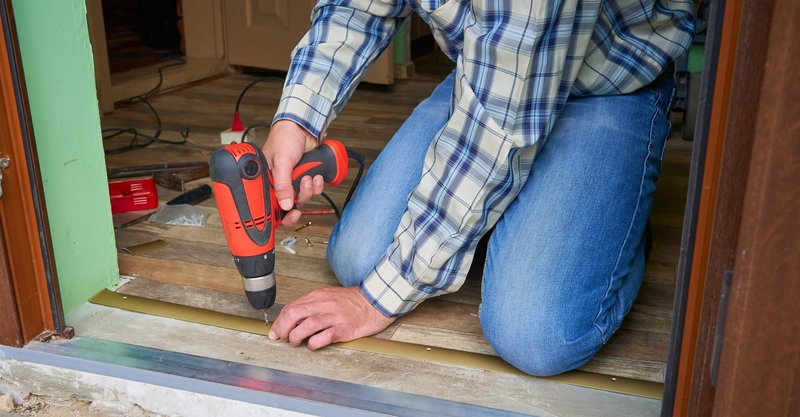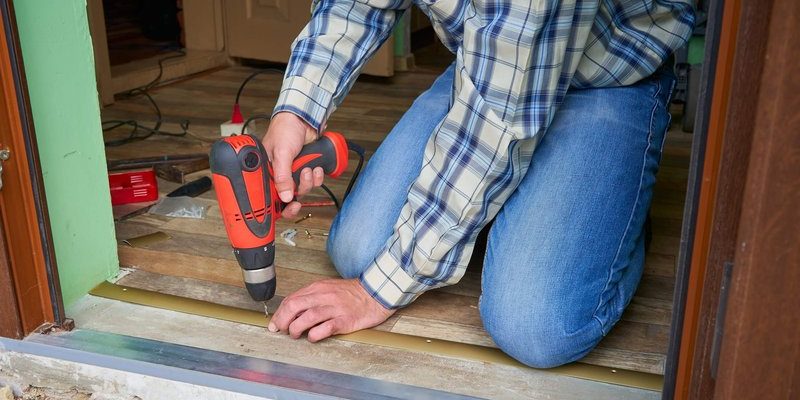
Now, if you’ve got a smart lock like the Schlage Encode or a classic Kwikset deadbolt, these seals are working overtime. Weather, dust, and daily use take their toll, and neglecting the seals only makes your life harder. If you want your door hardware to last and your home to stay cozy, a little TLC for those seals goes a long way. Honestly, you don’t need to be handy or use fancy gear. Let me show you how anyone can clean and recondition exterior door hardware seals—even if you’ve never done it before.
Why Exterior Door Hardware Seals Matter More Than You Think
Here’s the thing: those strips and gaskets around your door hardware are your home’s first line of defense. If they’re damaged or dirty, you’ll probably feel a chilly draft—even when the door’s closed tight. And if you use a keyless entry remote or smart lock, a bad seal can let in moisture, risking your electronics and even triggering “troubleshooting” headaches.
Well-kept seals do more than just keep out rain. They:
- Block insects and pollen from getting inside.
- Reduce outdoor noise (especially if you live near a busy street).
- Help your heating and cooling systems work less, saving money over time.
Think about it: if your battery-powered keypad lock gets moist, you could face unexpected “reset” issues or find yourself frantically looking up how to sync your remote after a short-circuit. So, keeping those seals in good shape isn’t just about cleanliness—it’s about protecting your investment and avoiding stressful, middle-of-the-night troubleshooting sessions.
What You’ll Need for Cleaning and Reconditioning
Don’t worry, you don’t need a toolbox full of gadgets. Most of the supplies for cleaning exterior door hardware seals are things you probably already have at home. Here’s what to gather before you start:
- Mild dish soap and warm water
- Soft cloths or sponges (microfiber works best)
- Old toothbrush or soft paintbrush (for tiny crevices)
- Silicone-based lubricant or conditioner (not oil-based!)
- Dry towel
- Cotton swabs (for getting into grooves)
If your hardware is electronic, like a Wi-Fi smart lock or remote code entry system, make sure you have a way to “turn off” or “lock out” the tech temporarily—just in case you need to sync or pair it again after cleaning. Safety first!
Step-by-Step: How To Clean Exterior Door Hardware Seals
Let me explain how to make those grimy seals look (and work) like new. Honestly, it’s easy if you go step by step:
- Open the door wide and inspect the seals. Check for cracks, tears, or spots where the seal pulls away from the frame. If it’s crumbling, you may need to replace it instead of just cleaning.
- Lightly dust the seals and surrounding hardware with a dry cloth or a soft brush. This gets rid of big particles before you add water.
- Mix a few drops of mild dish soap with warm water. Dip a cloth or sponge in, wring it out well, and gently wipe along the entire seal. Take your time—get into the grooves behind the handles, latches, and any keypad or remote sensor panels.
- Scrub stubborn spots with an old toothbrush or a cotton swab. Don’t press too hard, especially on old or brittle seals—think “gentle massage” rather than “deep tissue.”
- Wipe with clean water, then dry the seals thoroughly. Moisture left behind can cause mold or sticky buildup over time.
This basic routine can add years to your seals—and it’s way cheaper than replacing them, especially if you’ve got name-brand smart locks or electronic remotes that rely on good insulation.
How To Recondition and Restore Flexibility
Once your seals are clean and dry, it’s time for the really satisfying part: reconditioning. This helps old, dried-out seals bounce back instead of cracking apart.
The trick is to use a silicone-based conditioner—never a standard oil or petroleum jelly, since those can actually degrade rubber and vinyl over time.
- Apply a small amount of silicone conditioner to a soft cloth (never directly on the seal).
- Rub it gently along the entire length of the seal, making sure to cover both the flat parts and any edges that touch the hardware or door frame.
- Let it sit for 5–10 minutes. This lets the conditioner soak in and restore flexibility.
- Wipe off any excess so nothing feels greasy, especially around any keypad, code pad, or battery compartment.
If you use a universal remote lock or a smart entry system like Yale Assure, you’ll especially want to keep these seals supple—electronics and water never mix well, and a flexible seal keeps things tight and dry.
When Should You Replace vs. Restore?
You might be wondering, “How do I know if it’s time to replace the seal altogether?” Here’s how I think about it: if the seal is just dirty or starting to dry out, cleaning and reconditioning usually revives it. But if you spot any of these issues, replacement is the way to go:
- Big cracks or chunks missing
- Seal won’t stay attached (even with adhesive)
- It’s rock hard or crumbles when touched
In these cases, you can buy replacement seals at most hardware stores. Measure your door and look for seals that fit the thickness and style of your hardware, whether it’s a smart code lock or a classic deadbolt.
Replacing isn’t complicated—usually just a matter of peeling off the old one, cleaning the area, and pressing a new seal in place. If you’re nervous, YouTube has step-by-step videos, or you can check your hardware brand’s support page for specifics.
Tips for Maintaining Door Seals Long-Term
Let’s be honest: nobody wants to do this every month. The good news is, if you keep up with a little routine care, you can stretch out the time between deep cleanings and keep your hardware working like new.
Here are a few easy habits:
- Wipe down the seals (and the rest of your door hardware) every couple of weeks, especially after a rainstorm.
- Spritz silicone conditioner every season—think spring cleaning and back-to-school time.
- Keep an eye out for areas where the seal is starting to lift or lose its grip. Fix these right away, especially near keypads or battery doors.
- For smart locks or remotes, check for “pairing” or “sync” problems after big weather changes. Sometimes drafts can affect signal or battery life.
The more consistently you care for your seals, the less you’ll have to worry about troubleshooting unexpected door or remote malfunctions.
Comparing Different Types of Door Hardware and Seal Care
Not all door hardware is the same, and the type you have can affect how you clean and treat the seals. Here’s how it breaks down:
- Traditional keyed locks: These are the simplest to care for—just keep the seals clean and flexible. No electronic parts to worry about.
- Smart locks (like Schlage, Kwikset Halo, Yale): Be extra careful around sensors, battery covers, and remote code panels. Never spray water or cleaner directly on electronics.
- Universal fit hardware: Some aftermarket remote locks or handles don’t seal as tightly as factory-installed units. Check for gaps and always test after cleaning to be sure everything lines up and closes snugly.
No matter the type, the core routine is the same: gentle cleaning, thorough drying, and silicone-based reconditioning. If you notice persistent draftiness or problems with pairing your remote after care, double-check that seals are seated correctly and contact your hardware’s support helpline.
Why DIY Maintenance Beats Waiting for Repairs
Here’s my honest take: waiting until your exterior door hardware seals are a disaster just means more work (and money) later. I’ve seen friends ignore theirs until a big storm hits—suddenly they’re searching “troubleshooting remote won’t sync” or worse, replacing their whole smart lock because water fried the circuit board.
Routine cleaning and reconditioning is easy, cheap, and—dare I say—oddly satisfying. You’ll avoid sudden pairing or reset glitches, keep drafts and bugs at bay, and help your fancy door hardware last as long as possible. Plus, there’s just something nice about a front door that feels like a snug, secure handshake every time you walk through it.
If you stick with these simple steps, you’ll spend less time worrying about broken seals and more time enjoying a comfortable, well-protected home. That’s a win in my book—whether you’re team old-school deadbolt or riding the smart lock wave.
